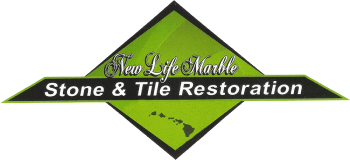Stone Restoration Services
Serving Maui, HI
Our 5-Step Process | Stone Restoration / Maintenance
Our 5-Step System for Obtaining & Maintaining Beautiful Stone
Step #1 Consultation / Evaluation
First, we inspect your stone and perform a number of tests to determine type of stone. We will inspect the wear patterns and damage on the stone. After reviewing this data, we may restore a sample area for a nominal charge. This will allow us to be very precise in our diagnosis of the problem and give you a snapshot of what your stone surface should look like. We can also determine if your stone should be sealed.
Step #2 Restoration
Through the use of trained stone technicians, state-of the-art equipment and materials, we will restore your stone surface to its original beauty. All work will be completed in a professional and timely manner.
Step #3 Impregnation/Protection
Many stones are susceptible to stains from spills of coffee, soft drinks, soiling from normal foot traffic, oils and many other things. It can be protected against these stains by the use of an impregnator. An impregnator is an integral part of an ongoing, proactive stone care program. We use only the best, sometimes most expensive impregnators available on the market. Impregnators facilitate an easier, cost effective maintenance program for all natural stone by offering long term protection against stains and dirt penetration.
Step #4 Daily Maintenance Training
Most people use what they consider to be “safe” techniques and chemicals on their stone to care for it on a daily basis. What may be safe for tile or ceramic, can be damaging to natural stone. After we restore your stone surface to its original beauty, we will train you or your cleaning people on how to maintain a restored appearance on a routine basis. We can even leave you with our recommended daily stone cleaner to use.
Step #5 Periodic Follow-Up Restoration
Even after stone has been restored and impregnated, its new beautiful appearance is not permanent. Proper daily care will greatly extend the beautiful appearance, but on-going foot-traffic and other factors will always be wearing away at the bright, clean appearance. A periodic maintenance program will mean additional expense, but it will ensure a beautiful floor at all times and prevent the need for a complete restoration in the future. After restoration, we can design a periodic restoration schedule. The frequency will be determined by both the needs of your specific stone and the appearance level that you would like to maintain.
Stone Maintenance/Restoration
We are one of the few area companies that specalize in the use of diamond abrasives in therestoration of your stone surfaces. The use of diamonds in the grinding and honing phase of restoration will give you better clarity and more reflectivity after polishing. We also provide cleaning, sealing, crack/chip repair and stain removal for marble, granite, travertine, terrazzo and all other natural stone surfaces.
Following are the restoration / maintenance services we offer and what they entail:
Grinding: To remove deep scratches and remove lippage (uneven tile edges). Done by machine with diamond abrasive pads and water that creates no dust.
Honing: To remove minor scratches and wear from eveyday foot traffic. This process is also done by machine with diamond abrasive pads and water which creates no dust.
Polishing: To give marble or stone the sheen you want, enhance the veining in marble and to protect the marble or stone from everyday traffic and spills. (Utilizing the same compounds that are used in the fabricating process.)
Cleaning: To remove dirt, stains and bacteria and to remove waxes and polymers that have become embedded.
Sealing:: To protect and preserve natural stone. (Using penetrating sealers / impregnators.)
Color Enhancing: The use of penetrating sealers / impregnators formulated to enhance or enrich the color of your stone.
Stripping: To remove coatings that block stone’s ability to breathe which causes spalling (when the stones crack, pop and shale). Some examples of common coatings are, crystallization, janitorial waxes, and polyurethane.
[top of page]